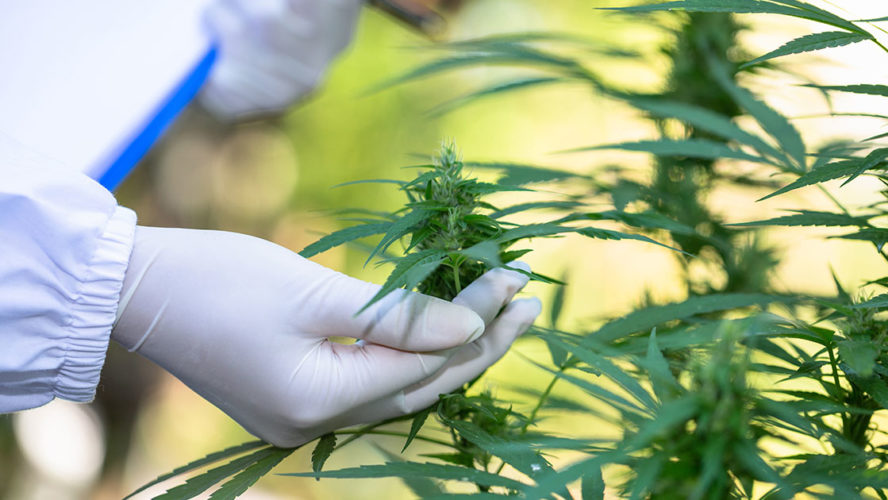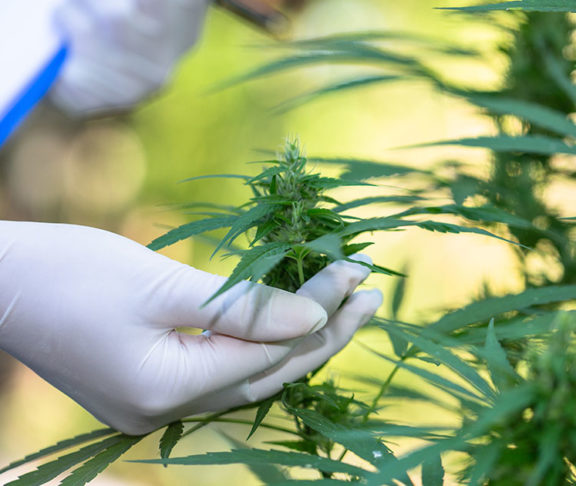Our panel of experts discusses the political, technological, social, and educational resources the cannabis industry needs to succeed.

Juanjo Feijoo
COO and CMO, Weedmaps
What kind of technology should cannabis businesses be prioritizing today?
The two main challenges for cannabis businesses today are compliance and efficiency. Finding technology solutions that allow dispensary owners to focus on running their businesses effectively is key to succeeding as competition heats up in the industry.
Whether it’s your customer relationship management tool, your menu and orders management tool, your point of sale, or your logistics software, being able to not have to worry about the software just working, or potentially running afoul of complex compliance requirements, is key.
Should we be focused on changing the existing stigma surrounding cannabis, especially in front of an older demographic?
The latest Pew research shows that only 8 percent of U.S. adults think cannabis should be totally illegal, and 60 percent are in favor of adult-use cannabis. Attitudes toward cannabis have already shifted drastically over the past several years, and we believe they will continue to do so, but unfortunately action is way behind attitudes in this case, and many people are unable to use cannabis as would be best for them due to lingering stigma or outdated rules and regulations.
Encouragingly, we see change starting to happen in spaces that have historically been anti-cannabis, such as professional sports. Case in point, we recently announced a partnership with Kevin Durant and his company Thirty Five Ventures — a collaboration of that magnitude would have been unthinkable just a decade ago, and it came shortly before the NBA changed its cannabis testing requirements.
How important do you think the need for representation in the Cannabis industry is?
The next phase of growth for this industry simply cannot ignore the history of cannabis in the United States and the disproportionate impact it’s had on certain communities. In fact, tackling social equity within the cannabis industry is top of mind, not just for businesses like ours, but for consumers.
We actually just completed our first Weedmaps data and insights report, Cannabis in America, which surveyed cannabis consumers and non-consumers. The data showed that 57 percent of respondents believe everyone should have access to opportunities in the cannabis industry, and the same number also believe that everyone benefits from a more inclusive cannabis marketplace.
Everyone having the access to opportunities means creating programs and focusing investment on helping entrepreneurs from communities disproportionately harmed by the government’s failed “war on drugs” as they face the biggest obstacles to entering the legal market — especially when it comes to issues like accessing capital. The industry will be successful only if minority business owners are successful.

Jennifer Lujan
Senior Director for Social Impact, Eaze
What does the business of cannabis mean to you?
Doing good for society while doing well at business. Every cannabis company has to have practical, long term strategies to support communities hurt by the war on drugs and low-income patients, because the industry is built on their history. Eaze’s Momentum business accelerator, social equity menu, and Eaze Compassion program are focused on sustained support for BIPOC (Black, Indigenous, People of Color) entrepreneurs and patients; groups that get left behind unless the industry puts muscle behind them.
Consumers play a huge role here, because they’re keenly interested in their dollars supporting positive outcomes, so we’re also focused on helping customers be part of the solution. We feel strongly that cannabis can help solve some of the greatest challenges facing our country, but it all starts with practical action.
What are the greatest challenges facing the cannabis industry today?
High state taxes and federal inaction on banking. Cannabis businesses pay much higher taxes than other industries, but we still can’t walk into a bank and open an account.
Our industry is a huge job creator, provides an essential product, and contributes millions in tax revenue to state and local budgets. But this will all go away if governments don’t provide tax and banking relief to licensed businesses, because the legal industry will be subsumed by illicit sales. That outcome is the exact opposite of what Californians voted for with Proposition 64.
How can we ensure we communicate about cannabis in a way that appeals to different sets of stakeholders?
I hope our industry leans into the good we’re doing for society, because that message will resonate and motivate. Our businesses create thousands of good jobs that support families and communities.
We farm an agricultural commodity that has huge benefits for physical and mental health. We contribute many millions in tax revenue to fund community priorities. And we’re addressing decades of racist policies that put generations behind bars. If we cohesively make this case, we can and will successfully build greater support outside the industry.

Meredith Fisher-Corn, M.D.
Editor-in-Chief, TheAnswerPage.com
What are the greatest challenges facing the cannabis industry today?
One of the most significant barriers to the growth of the medical cannabis market involves the lack of healthcare provider engagement. Most doctors, nurses, pharmacists, and psychologists have been informed of the risks of cannabis use, including cannabis use disorder, and they know the U.S. federal government classifies marijuana/cannabis as a Schedule I drug (a substance that has no accepted medical use, lacks accepted safety for use under medical supervision, and has a high potential for abuse).
Yet few healthcare providers know about the therapeutic use of cannabinoids or the endocannabinoid system. In fact, the results of a survey of recent medical school graduates indicate that nearly 90 percent of medical residents and fellows felt not at all prepared to recommend medical cannabis, and 85 percent reported receiving no education in medical school or residency on medical cannabis.
The classification of cannabis as a Schedule I drug and the lack of knowledge of cannabis-based therapeutics leads to skepticism among healthcare providers.
Do most cannabis patients regard their primary care professionals as the first-line resource for providing advice about cannabis-based therapeutics?
A significant percentage of patients simply do not have the confidence in their healthcare providers to guide them on the therapeutic use of cannabinoids, and therefore they seek answers and guidance elsewhere.
At this time, most clinicians have not been provided the education to answer basic and essential questions, such as “What is the endocannabinoid system?” “How do the components of the cannabis plant interact with our bodies?” “How will THC, CBD, or the other cannabinoids interact with the prescription medications a patient is taking?”
“What are the different modes of administration, and what are the advantages and disadvantages of each mode?” “I am no longer pregnant, but I am breastfeeding. Is it safe for me to resume my medical cannabis therapy?” “Do cannabis products cure cancer in humans?” “All medications have risks and side effects. What are the risks and side effects of cannabis?” “Do the benefits of medical cannabis outweigh the risks, in my case?” “Is CBD addictive?”
If clinicians cannot answer these basic questions, then they are certainly not equipped to guide their patients on the therapeutic use of cannabinoid-based products.
How should the cannabis industry engage the healthcare community and foster healthcare provider education so clinicians can safely and effectively manage the care of medical cannabis patients?
Clinicians typically base their medical practices on the findings and results of large-scale clinical trials. Relatively few clinical trials examining the efficacy and safety of cannabis-based products have been conducted to date, but there is still a significant amount of quality information about the endocannabinoid system and medical cannabis that can be offered to clinicians. Growers and dispensaries should enlist the expertise of independent medical cannabis educators to provide unbiased, evidenced-based education for clinicians.
Do you think healthcare providers will be receptive to medical cannabis education?
Yes, most definitely. Although many clinicians view cannabis as an illegal addictive substance with no medicinal value, clinicians realize there has been a dramatic increase in the use of cannabis-based products for medicinal purposes. Clinicians from various fields of healthcare have acknowledged that in order to be able to provide quality medical care, they must have a solid understanding of the endocannabinoid system and how cannabinoids can potentially impact the progression of certain medical conditions, and affect overall health and well-being.
Numerous surveys evaluating the beliefs and knowledge base of healthcare providers have shown that physicians, physician assistants, nurses, pharmacists, psychologists, and other clinicians feel ill-prepared to counsel patients on the use of cannabis-based therapeutics, and they are interested in learning about the health effects of cannabis-based products. Universally, these survey write-ups conclude with the notion that whether or not a clinician approves of medical cannabis and plans to recommend cannabis, the clinician needs to know about medical cannabis and its health effects in order to effectively and safely treat medical cannabis patients. Clearly, clinicians desperately need and want this education.

